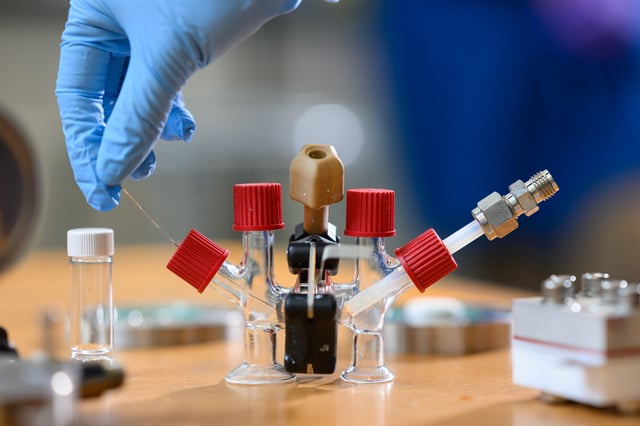Overview
- The sodium-air cell uses liquid sodium and oxygen to enable refueling instead of recharging while leveraging sodium’s low cost and abundance.
- Lab-scale prototypes employing ceramic electrolytes and porous air electrodes delivered almost 1,700 Wh/kg per stack, translating to over 1,000 Wh/kg at full system scale.
- The device produces sodium hydroxide as a discharge product, which can be collected for commercial caustic soda and used to capture carbon dioxide.
- Surpassing the 1,000 Wh/kg threshold could unlock electric propulsion for aircraft, ships and trains that are challenging to decarbonize with current batteries.
- Propel Aero, a company spun out of the MIT research team, has been formed to scale up and commercialize the technology for transportation use.



